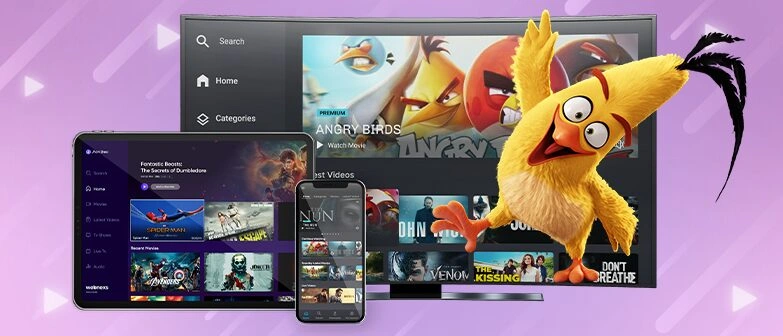How Live Streaming Apps Are Transforming the Entertainment Landscape?

The emergence of live streaming apps in 2025 is causing one of the biggest changes to the entertainment sector in decades. What started as a specialized method for influencers, musicians, and gamers to engage with fans has grown into a widespread phenomenon that is changing how people engage with, consume, and even produce entertainment.
With the power of real-time engagement and global accessibility, live streaming apps are not just competing with traditional media — they’re redefining it. From music concerts to interactive game shows, the entertainment experience is now more personal, participatory, and immediate than ever before.
1. From Passive Viewing to Active Participation
Traditional entertainment was largely a one-way street — audiences watched, listened, and absorbed content without much interaction. Live streaming apps have flipped that model, allowing viewers to:
- Ask questions in real-time.
- Vote on outcomes.
- Participate in challenges and polls.
This interactivity creates a sense of ownership over the content and strengthens the connection between audiences and creators.
2. Breaking Down Geographic Barriers
Live streaming apps make it possible for someone in New York to watch a concert happening in Tokyo, or for a comedian in London to interact with fans in Los Angeles, all in real-time. This global reach has:
- Expanded audience bases for creators.
- Allowed niche entertainment genres to thrive.
- Made exclusive events accessible to millions.
For the audience, it means the world’s stage is now in their pocket.
3. A New Era of Celebrity and Influencer Culture
A new type of performer known as streamers has emerged as a result of platforms like Twitch, YouTube Live, and Instagram Live. These digital natives are not constrained by studio timetables or TV contracts. They directly produce, disseminate, and profit from their work, frequently cultivating devoted fan bases.
This change has democratized entertainment, enabling anyone with a smartphone, skill, and inventiveness to reach a worldwide audience.
4. Interactive Entertainment Formats
Live streaming apps are fostering new genres of entertainment. Examples include:
- Live shopping events where viewers can purchase products instantly.
- Virtual concerts and festivals with real-time song requests.
- Interactive game shows where viewers influence the outcome.
- Behind-the-scenes streams from movie sets and music studios.
These formats merge entertainment with participation, creating immersive experiences that traditional media struggles to replicate.
5. Real-Time Monetization Opportunities
For creators, live streaming has opened lucrative revenue streams through:
- In-stream ads and sponsorships.
- Paid subscriptions for premium content.
- Virtual gifts and tipping from viewers.
- Ticketed online events.
For the entertainment industry, this means audience engagement is directly linked to revenue generation, making it a sustainable business model for both established and emerging talent.
6. Personalized Viewing Experiences
AI and recommendation algorithms are used by live streaming companies to select material according to the tastes of their audience. Whether you enjoy stand-up comedy, esports, or indie music, you can quickly find streams that fit your tastes. Users return again and again because of this customisation.
7. Challenges and the Road Ahead
Although live streaming presents unmatched prospects, it also presents obstacles such as technical infrastructure, content moderation, and competition for viewers’ attention. But because of developments in cloud computing, 5G connection, and AI-powered moderating tools, these issues are gradually being resolved.
Conclusion
The future of the entertainment sector is being driven by the rise of on-demand streaming platforms, and in 2025, Netflix clone apps stand at the center of this revolution. No longer just an alternative to traditional broadcasting, these apps have evolved into the dominant medium through which people explore, consume, and interact with content. They’ve erased the limits of location, time, and access, allowing users to enjoy their favorite shows, movies, documentaries, and even live events anytime, anywhere. A Netflix clone app today is more than a content library — it’s a dynamic, AI-driven entertainment ecosystem. It can deliver personalized recommendations based on viewing habits, enable adaptive streaming for seamless quality across devices, provide multilingual and subtitle support to reach diverse audiences, and offer features like offline downloads, synchronized watchlists, and multi-device playback that match or even surpass the originals.
What makes Netflix clone apps especially powerful is their ability to go beyond mere replication. Businesses can innovate by adding live-streaming integrations for events, hosting interactive watch parties with real-time chats, incorporating gamified loyalty programs, or curating community-driven playlists that encourage deeper engagement. These apps give filmmakers, production houses, and independent creators the ability to bypass traditional distribution networks, making it possible to directly monetize their content through subscriptions, pay-per-view, ad-supported tiers, and exclusive premium access.
In this rapidly expanding digital entertainment economy, the Netflix clone model blurs the boundaries between local and global storytelling, between scripted precision and authentic spontaneity, between the role of the creator and the role of the audience. It enables small creators to reach global markets, large studios to engage niche communities, and businesses to build a long-term streaming brand with scalable infrastructure. By investing in a Netflix clone app in 2025, companies aren’t just building a streaming service — they are laying the foundation for a high-growth digital platform that can evolve with emerging trends, harness new monetization models, and foster loyal communities that keep coming back for more.





